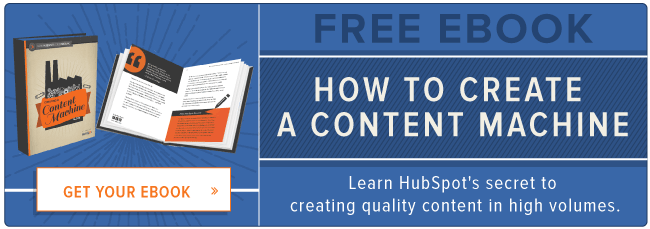 “Is this good enough?”
“Is this good enough?”

It’s a question that has at one time or another haunted us all. It's unique in its ability to be both universally familiar and individually personal due to the way it transcends industries, job descriptions, and skillsets, yet simultaneously elicits in each of us a certain degree of emotional conflict. It’s a question that undoubtedly deserves an answer, or at the very least an exploration, and that is precisely what I hope to accomplish in this article.
Yet before I begin, we must first acknowledge one very important yet obvious fact: The answer to this question is dependent entirely on the context of the situation in which you find yourself asking it.
Determining the threshold at which there are diminishing returns from the time invested to increase quality -- as well as whether crossing that threshold is truly worthwhile -- is ultimately a personal decision that must be weighed against the often-competing demands and interests of your company. Having acknowledged this, then, it makes sense for us to be specific regarding the context of the question in this instance. For the sake of this audience, I believe it will be most beneficial to explore the question as it relates specifically to inbound, or rather to the work of those individuals who produce written content or more traditional creative collateral (design, video, etc.) for their companies.
Why Creators Run Into This Problem
Yet is making this distinction really important? Unfortunately (for you), yes.
The fact is, if you are responsible for any aspect of content production for your company’s inbound efforts, you suffer from a far more demanding set of expectations regarding creative output than almost any other creative professional. Central to inbound is the idea of frequently and consistently producing content for people to consume. Those two harrowing words -- frequent and consistent -- lead directly to the thing nightmares are made of for creative professionals: volume. Sure, agency life can be stressful due to the constant pressure from demanding clients. And yes, the expectation of quality for B2C creative is typically much higher than that of its B2B counterpart. However, no other creative professional or team is continually challenged to answer the volume question quite like inbound creatives.
This situation arises from the scheduled nature of content delivery that is fundamentally important to inbound. Inbound creative is dictated almost entirely by time and deadlines, and while having a consistent schedule for content delivery is excellent in terms of improving both the discoverability of and engagement with your brand, it is the bane of existence for creatives.
Immoveable deadlines -- in almost all instances -- immediately signal to the creative professional that achieving a creative output in the ballpark of 100% of their potential quality is a thing of impossibility. For the creative professional, this manifests itself internally as concession and compromise in the best of cases, and immediate defeat in the worst.
The truth is, there does exist a direct correlation between the amount of time that can be allotted for a project and the potential to achieve maximum quality. In order to maximize the quality of a deliverable, then, the desired quality should dictate the deadline rather than the deadline dictating the quality. Unfortunately, inbound rarely allows for that, and so discovering a way in which to maximize the quality of our creative output within the constraints of an inbound timeline is the ultimate goal and eternal struggle of the inbound creative professional.
What Does "Done" Mean?
At HubSpot, the situation is no different. When I was first hired to run HubSpot’s internal creative and design team, I was tasked with the difficult job of figuring out how to improve the productivity of the team and the quality of the work it produced.
I spent the first several months exploring ways of minimizing distraction and inefficiency while maximizing the amount of time my team spent in a conceptual or production space (you know, the places where work actually gets done). Some of my efforts included: completely changing the team structure, minimizing the degree of formal procedure, cancelling all meetings for my direct reports, and even moving my team to a different area of the office. Yet more than any of these, the initiative I felt would most quickly have a positive impact on the team’s work was defining what it meant for a project to be “done.”
Far too often, both time and quality are lost because of a lack of clarity regarding late-game questions, such as who should give feedback, how many rounds of feedback should be given, the degree of change that can be requested, etc. My hope was that by defining what it meant for a deliverable to be “done,” I would successfully avoid such pitfalls, providing my team members with everything they needed to determine the proper process for completion, decide which stakeholders were appropriate to include in review, and feel empowered deciding when the things they were creating were good enough to ship. It seemed like a great idea, and I pursued it wholeheartedly.
Unfortunately, it was doomed to fail.What I quickly realized was that none of the most intuitive answers actually stand up to scrutiny.
“If the problem is solved, it’s ready to ship.”
“If the client approves, it’s ready to ship.”
“If the audience will love it, it’s ready to ship.”
“If it will be shared, commented on, and talked about, it’s ready to ship.”
While all of these appear to be obvious choices for a definition of “done,” the problem is they all fall short by not placing final quality assessment solely (or even mostly) within the domain of the actual creator. For example:
- There are countless ways to solve the problems we routinely face, yet many of them don’t necessitate a creative solution requiring any kind of notable level of quality. Fixing something doesn’t make it good, in the quality sense. It just makes it usable by the audience, which should be the lowest level of acceptable in terms of the work we do.
- The client (or another department) requests your assistance because they aren’t capable of achieving the quality themselves. The job of the client isn’t to dictate (or even recognize) if something is “good enough” to be considered done; that’s the job of a professional creative. The job of the client is to identify a need or opportunity and alert the creative professional.
- Again -- the audience should never be the ultimate authority on what is “good enough.” Yes, the goal is that they find a deliverable beneficial because it improves their lives in some way (e.g. making them happier, easier, safer, etc.), but the truth is that the same effect could often be achieved with a completely stripped down version of the same deliverable. Surprisingly, audiences will consume something fairly shallow. Quality is what makes the shallow thing deep.
- People share crap all of the time. In fact, the majority of viral videos appear as if they’ve been filmed with a potato. Buzz is a great thing, but it doesn’t necessitate quality by any means. In fact, content is frequently “successful” in spite of its quality.
Now, I’m sentimental to anyone who feels (as I did initially) the pull to disagree and claim that one, all, or some combination of these things is precisely what it means for something to be done. In response, though, I would caution those detractors to recognize the implications of that claim in the context of creative work. If we want to accept this, then we must deduce that neither high quality nor the authority of the creator is actually necessary in the best of cases, or even valuable in the worst, when determining if something is done. Neither my intuitions nor my career allow me to accept this as true, for if it is, then “good enough” is entirely creator-independent; the only thing that makes a thing good enough is the opinion of the audience, not the authority of the doer. For me, this is an unacceptable concession because it takes the role of discernment out of the hands of the people we typically take to be the experts and puts it solely in the hands of the pedestrian.
However, taking the polar opposite stance doesn’t solve our problem, either. While, yes, every creative professional would love to be able to say, “It’s good enough when I think it’s ready,” this unfortunately is neither practical nor even possible given the scheduled nature of inbound content delivery.
So a middle ground must be found. However, it’s important to realize the implications of this: By developing a definition for “done” that includes to some degree a requirement which dictates that the creator is a determining factor regarding whether something is “good enough” to be considered done, we are admitting that the definition implies that subjectivity is important, even fundamental.
The Formula for "Good Enough"
This is how my original pursuit for a definition of “done” evolved into the question of what and who determines when something is “good enough.” Admittedly, I was ready to just forfeit and say, “You know what? We’ll just spend every possible moment working on something -- improving, polishing, and refining it -- until I absolutely have to ship it.” Unfortunately, this isn’t realistic; inbound usually puts us in the position to be responsible for multiple projects simultaneously, so it was still beneficial to figure out a method for determining when we could comfortably move from one project to another.
What I was failing to realize, though, was that my pursuit for a definition of “done” had actually given me a much clearer picture of what I was looking for in terms of “good enough”. In fact, while I didn’t have the answer itself, I did have the structure of the answer: The answer to the question of whether something is “good enough” will ultimately strike a balance between the subjective and the objective, making sense of the self-approval of the creator, an objective quality component, and the need for a formalized system which allows for uniform application of the test in all instances -- all while working within the constraints of an inbound timeline.
From there, all I needed was to find a solution that accounted for these variables. Having spent the last year and a half continually refining, reducing, and rethinking this, here is what I’ve come up with.
A deliverable can be considered "good enough" when:
- It successfully solves the problem, addresses the need, or conveys the message intended,
- It is clearly and distinctly on brand,
- The quality of work is consistent with or above the level of previous work,
- It has been thoroughly yet objectively scrutinized by other qualified individuals, and
- The final decision of preference had been left in the hands of the creator.
The first two are self-explanatory; they are the most fundamental requirements for preparing a deliverable to be shipped. The third transitions our focus to quality. By ensuring that each subsequent deliverable is as good as or better than the one before it, you guarantee not only that you’ll maintain the quality of your brand, but that -- over time -- your brand’s quality will continue to progress with each passing project. However, the last two deserve explanation, as they are the ones responsible for allowing us to find a middle ground between the subjectivity of the creator and some modicum of objectively graded quality. Fortunately, there is a way to achieve this middle ground while also aligning with one of the most fundamental elements of creativity: collaboration.
Let’s face it, the work we do is really quite difficult. The truth is, humans have advanced to the point where most of the problems we’re presented with are incredibly hard to solve, and because there is only so much information one human brain can handle, we have all had to become increasingly specialized in our knowledge and skills. This specialization has a major implication when it comes to creativity: it has increasingly become a group process -- a fact that holds true across almost every field and discipline. This is for a good reason: the increasing complexity of human knowledge, coupled with the escalating difficulty of the kind of work for which we are responsible, means that people must either work together or fail alone.
Herein lies the key to grounding the subjective in objectivity. By putting the thing in question under the scrutiny of others, it is possible to make the subjective more objective. Crowd sourcing consent (or dissent) has value in that it can triangulate a shared vision of what is “good enough,” and while collecting what in science would be considered a statistically significant sample size is neither possible nor beneficial (design by committee, anyone?), there is value to having other qualified eyes scrutinize the work. Yet how do you avoid falling into the same trap of making “good enough” entirely creator-independent? My answer is by following a method of agile feedback I use with my creative team, which I refer to as “climbing ladders.”
Take the typical project, for example. The first thing I do is meet with a client or stakeholder and assess their need. This includes taking their requirements and specifications, from which I begin to formulate an idea or concept for how we can solve that problem. I then take all of that information, including my concept, back to my creative team. Now, if they decide to take the idea in a different direction, that’s fine. What’s important is that the next step for them is to build an initial deliverable.
However, my job is not over. I then have to come in and put the deliverable through the ringer. I push on it and pull on it. I bite at it. I do everything I can to poke holes in it. From there, it’s my creative team’s job to go back and work on the deliverable and plug up those holes in order to defend it against all of the critiques and feedback I gave.
Yet again -- my job is not over, and so we repeat this process again. And again. And again. And in this way, we keep climbing the rungs of this ladder until we get to the point in which the only feedback I have sounds like this: “Well I would prefer if …” And once we’ve reached that point -- the point of preference, where I’m no longer objectively justified in my feedback -- that the deliverable is done and ready to ship, and my creative team gets to put the final stamp on it. In this way, I get to a point in which the deliverable is defensible -- I can sit in any room with any executive or client and justify all of the decisions -- but my creative is happy because s/he has had final say. In that way, I get an objectively defensible deliverable, and my creative gets his or her subjective grade of quality.
Thus is the method HubSpot’s internal creative and design team uses in order to strike an optimal balance between productivity and quality while successfully operating within the demands of an inbound delivery schedule. By following this system, I’m able to comfortably make the call when something is good enough to wrap up and move on to another project, all while staying true to the brand, ensuring a constant progression of the brand’s quality, keeping my team of talented creative professionals happy, and not falling victim to a never-ending queue of deadlines. Yet there is one final note that deserves mention as it relates to those deadlines: Help yourself by making sure they’re fair.
Deadlines can be arbitrary; eventually, you have to deliver the things you’re working on, and it is often motivating to set a date at which point you’ll do so. Deadlines can be sudden; we often need to be agile enough to be able to make the most of an opportunity by responding to it in real time. However, deadlines should never be both arbitrary and sudden. A fair deadline, then, is one in which the date of delivery is either distant enough to permit its arbitrariness or meaningfully important enough to justify its suddenness. By following this rule, you’re more likely to stack the cards in your favor, providing yourself with the time needed to achieve that grade of “good enough."
I Think This Post Is "Good Enough"
We’ve now come to the point where I feel comfortable deciding that this article is good enough to move on. I believe I’ve answered the question I set out to. The work is not only in line with HubSpot’s brand, but I would like to think consistent with the high level of quality that has come to be expected. Most importantly, though, it’s been reviewed by my insanely qualified peers, and yet I’ve been allowed to make the final call on how to end it.
Or maybe I’m just sick of working on it. As my good friend Richie Stewart -- one of Boston’s most highly-respected designers -- recently reminded me: “Dude, it’s good enough when the imperfections aren’t punching you in the face anymore.” Very true.
But in reality, I’m just out of time.






![How to Plan, Execute & Measure Marketing Experiments as a Growth Strategy [Free Template]](https://53.fs1.hubspotusercontent-na1.net/hubfs/53/marketing-experiments-calendar.jpg)
![How to Design and Validate CRO Experiments [Free Template + Calculator]](http://53.fs1.hubspotusercontent-na1.net/hubfs/53/CRO_Statistical_Significance_Calculator.jpg)